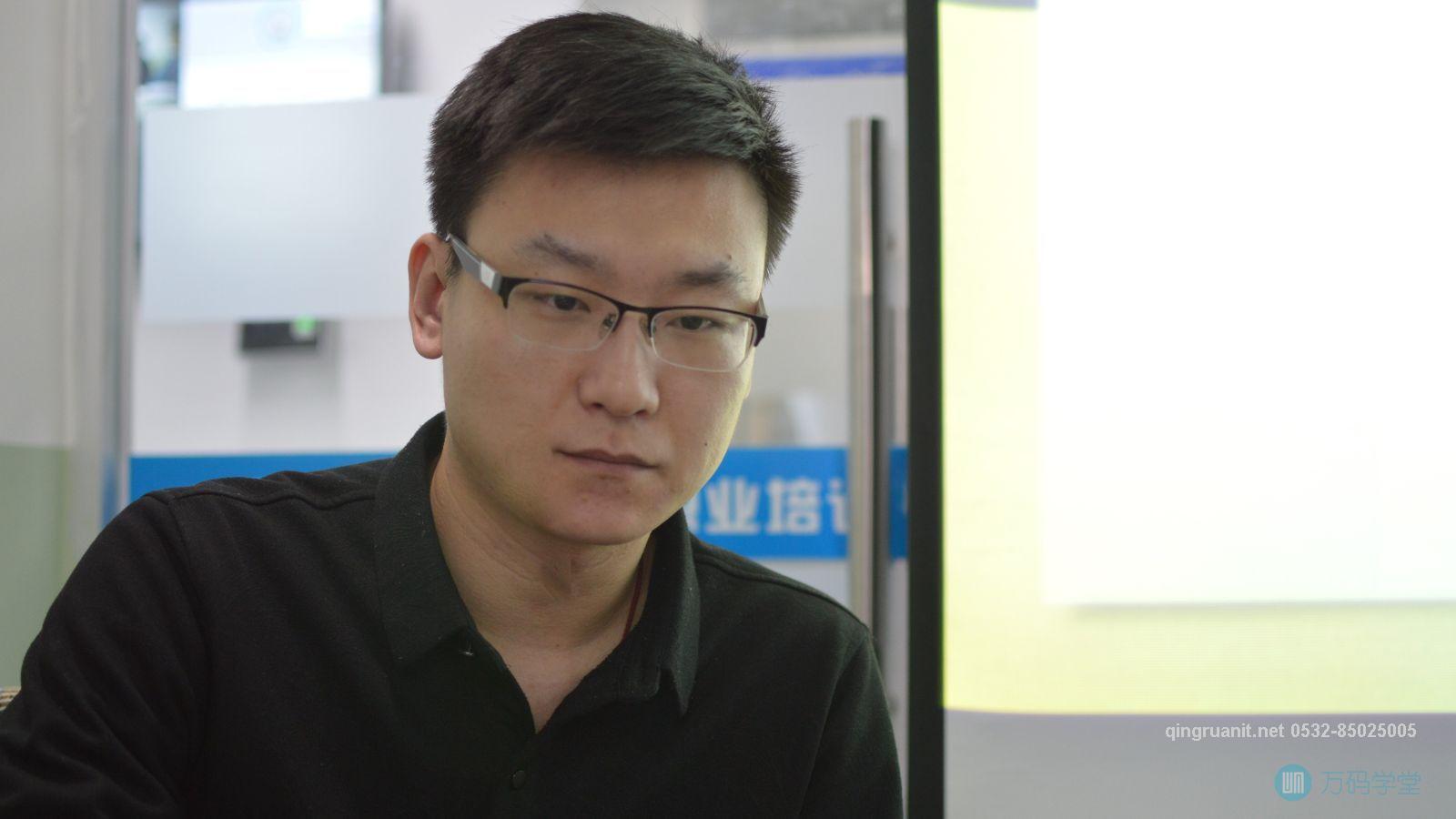原文链接: JDK动态代理实现机制 转载请注明出处!
===========================================
本文只对JDK动态代理的底层实现进行分析,如需了解代理模式和动态代理的使用请移步:设计模式—代理模式 动态代理的两种实现方式(JDK/Cglib)
在读代码之前先清楚两个概念:
1、Class类存储的是类的所有信息,包括类的所有方法、属性、实现接口等。每个类对应一个Class对象(单例),Class对象是由classLoader加载出来的,使用双亲委派模型来保证class只会被加载一次。
2、classLoader在加载类的时候不管class文件是从哪里来的,无论是从.class文件、网络、数据库类加载器都不关心。他只关心给他的class二进制流是不是能够通过校验。
说明:以下测试代码和 动态代理的两种实现方式(JDK/Cglib)相同
使用JDK动态代理需要实现InvocationHandler接口,同时实现invoke()方法。
package com.zpj.proxy.jdk;import java.lang.reflect.InvocationHandler;import java.lang.reflect.Method;import java.lang.reflect.Proxy;/**
* Created by Perkins on 2017/4/2. */public class JDKProxy implements InvocationHandler { private Object person; public Object getInstance(Object person) { this.person = person; return Proxy.newProxyInstance(person.getClass().getClassLoader(), person.getClass().getInterfaces(), this);
}
@Override public Object invoke(Object proxy, Method method, Object[] args) throws Throwable {
System.out.println("doSomething---------start");
method.invoke(person, args);
System.out.println("doSomething---------end"); return null;
}
}测试代码如下:
package com.zpj.proxy.jdk;/**
* Created by Perkins on 2017/4/2. */public class Run { public static void main(String[] args) {
Person person = (Person) new JDKProxy().getInstance(new MrLi());
person.doWork();
}
}
运行的时候在person处打断点可看到person的类名为$Proxy0而不是Person或者MrLi,则说明该返回对象是Person的实现类。

我们添加如下代码把person的class中的方法打印出来
package com.zpj.proxy.jdk;/**
* Created by Perkins on 2017/4/2. */import java.lang.reflect.Method;public class Run { private Method method; public static void main(String[] args) {
Person person = (Person) new JDKProxy().getInstance(new MrLi());
Method [] methods = person.getClass().getMethods(); for(int i =0; i<methods.length;i++){
System.out.println(methods[i].getName());
}
person.doWork();
}
}
结果如下,很明显红框中的方法不属于Person也不属于Object中的方法。这更进一步说明返回的person并不是Person的实例。

下面就进入底层代码对JDK动态代理进行解析。
这里直接对Proxy.newProxyInstance(person.getClass().getClassLoader(), person.getClass().getInterfaces(), this);进行分析。
public static Object newProxyInstance(ClassLoader loader,Class<?>[] interfaces, InvocationHandler h)throws IllegalArgumentException{ if (h == null) { //验证InvocationHandler不允许为null
throw new NullPointerException();
} /*
* Look up or generate the designated proxy class. */
//调用getProxyClass()获取Class实例,该实例便是返回的代理Person的实例,此方法为重点!!!
Class cl = getProxyClass(loader, interfaces); /*
* Invoke its constructor with the designated invocation handler. */
try { //利用反射机制从Class中取出构造器创建对象
Constructor cons = cl.getConstructor(constructorParams); return (Object) cons.newInstance(new Object[] { h });
} catch (NoSuchMethodException e) { throw new InternalError(e.toString());
} catch (IllegalAccessException e) { throw new InternalError(e.toString());
} catch (InstantiationException e) { throw new InternalError(e.toString());
} catch (InvocationTargetException e) { throw new InternalError(e.toString());
}
}
在上面方法中调用public static Class<?> getProxyClass(ClassLoader loader, Class<?>... interfaces)throws IllegalArgumentException获取了Class实例,下面进入该方法进行分析。
public static Class<?> getProxyClass(ClassLoader loader, Class<?>... interfaces) throws IllegalArgumentException { if (interfaces.length > 65535) { //验证接口数量不允许超过65535
throw new IllegalArgumentException("interface limit exceeded");
} //************开始对interface进行循环验证,验证通过则加入interfaceNames中***************************
Class proxyClass = null; /* collect interface names to use as key for proxy class cache */
String[] interfaceNames = new String[interfaces.length];
Set interfaceSet = new HashSet(); // for detecting duplicates
for (int i = 0; i < interfaces.length; i++) {//循环对所有接口进行操作
/*
* Verify that the class loader resolves the name of this
* interface to the same Class object. */
String interfaceName = interfaces[i].getName();
Class interfaceClass = null; try { //根据名称获取接口的Class
interfaceClass = Class.forName(interfaceName, false, loader);
} catch (ClassNotFoundException e) {
} if (interfaceClass != interfaces[i]) { throw new IllegalArgumentException(interfaces[i] + " is not visible from class loader");
} /*
* Verify that the Class object actually represents an
* interface. */
if (!interfaceClass.isInterface()) { throw new IllegalArgumentException( interfaceClass.getName() + " is not an interface");
} /*
* Verify that this interface is not a duplicate. */
if (interfaceSet.contains(interfaceClass)) { throw new IllegalArgumentException( "repeated interface: " + interfaceClass.getName());
}
interfaceSet.add(interfaceClass);
interfaceNames[i] = interfaceName;
}//************结束对interface进行循环验证,存储于interfaceNames中***************************
/*
* Using string representations of the proxy interfaces as
* keys in the proxy class cache (instead of their Class
* objects) is sufficient because we require the proxy
* interfaces to be resolvable by name through the supplied
* class loader, and it has the advantage that using a string
* representation of a class makes for an implicit weak
* reference to the class. */
Object key = Arrays.asList(interfaceNames); /*
* Find or create the proxy class cache for the class loader. */
Map cache; synchronized (loaderToCache) {
cache = (Map) loaderToCache.get(loader); if (cache == null) {
cache = new HashMap();
loaderToCache.put(loader, cache);
} /*
* This mapping will remain valid for the duration of this
* method, without further synchronization, because the mapping
* will only be removed if the class loader becomes unreachable. */
} /*
* Look up the list of interfaces in the proxy class cache using
* the key. This lookup will result in one of three possible
* kinds of values:
* null, if there is currently no proxy class for the list of
* interfaces in the class loader,
* the pendingGenerationMarker object, if a proxy class for the
* list of interfaces is currently being generated,
* or a weak reference to a Class object, if a proxy class for
* the list of interfaces has already been generated. */
synchronized (cache) { /*
* Note that we need not worry about reaping the cache for
* entries with cleared weak references because if a proxy class
* has been garbage collected, its class loader will have been
* garbage collected as well, so the entire cache will be reaped
* from the loaderToCache map. */
do {
Object value = cache.get(key); if (value instanceof Reference) {
proxyClass = (Class) ((Reference) value).get();
} if (proxyClass != null) { // proxy class already generated: return it
return proxyClass;
} else if (value == pendingGenerationMarker) { // proxy class being generated: wait for it
try {
cache.wait();
} catch (InterruptedException e) { /*
* The class generation that we are waiting for should
* take a small, bounded time, so we can safely ignore
* thread interrupts here. */
} continue;
} else { /*
* No proxy class for this list of interfaces has been
* generated or is being generated, so we will go and
* generate it now. Mark it as pending generation. */
cache.put(key, pendingGenerationMarker); break;
}
} while (true);
} try {
String proxyPkg = null; // package to define proxy class in
/*
* Record the package of a non-public proxy interface so that the
* proxy class will be defined in the same package. Verify that
* all non-public proxy interfaces are in the same package. */
//寻找到package的包路径,为构建代理类做准备。同时要保证所有的非public代理接口在相同的包中
for (int i = 0; i < interfaces.length; i++) { int flags = interfaces[i].getModifiers(); if (!Modifier.isPublic(flags)) {
String name = interfaces[i].getName(); int n = name.lastIndexOf('.');
String pkg = ((n == -1) ? "" : name.substring(0, n + 1)); if (proxyPkg == null) {
proxyPkhttp://www.cnblogs.com/PerkinsZhu/p/6658066.html

